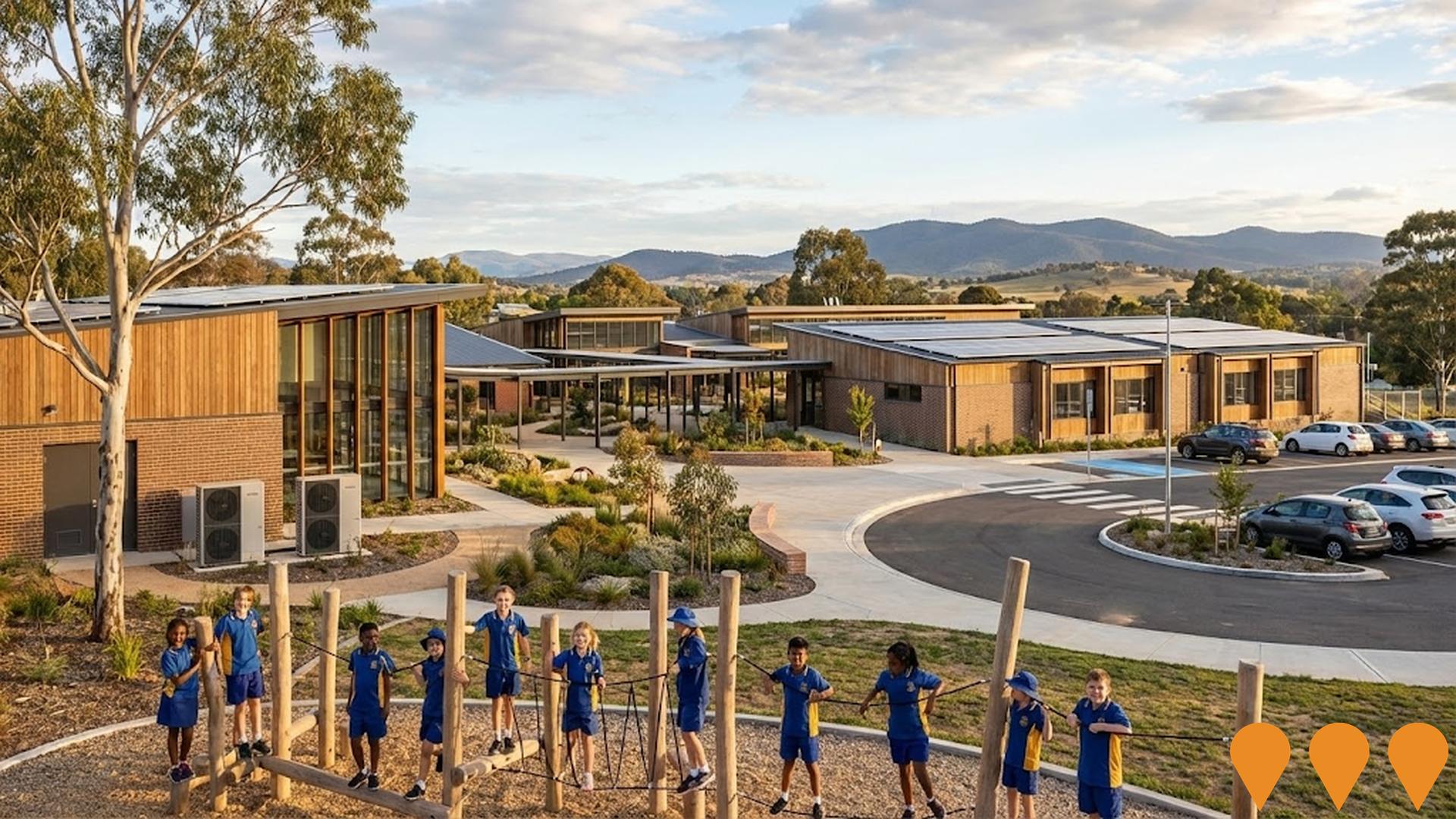Chart Color Schemes
est. as @ -- *
ABS ERP | -- people | --
2021 Census | -- people
Sales Activity
Curious about local property values? Filter the chart to assess the volume and appreciation (including resales) trends and regional comparisons, or scroll to the map below view this information at an individual property level.
Find a Recent Sale
Sales Detail
Population
Fadden has shown very soft population growth performance across periods assessed by AreaSearch
As of Aug 2025, Fadden's population is approximately 2965. This figure reflects a decrease of 41 people since the 2021 Census, which reported a population of 3006. The change is inferred from the estimated resident population of 2967 in June 2024 and an additional 1 validated new address since the Census date. This results in a population density ratio of approximately 953 persons per square kilometer, comparable to averages seen across other locations assessed by AreaSearch. While Fadden experienced a 1.4% decline since the census, the SA3 area achieved a 0.2% growth, indicating divergent population trends. Natural growth contributed approximately 52.1% of overall population gains during recent periods.
AreaSearch is adopting ABS/Geoscience Australia projections for each SA2 area, released in 2024 with a base year of 2022. For areas not covered by this data and years post-2032, age group growth rates from the ACT Government's SA2 area projections are adopted, using 2022 as the base year. Based on these projections, lower quartile growth is anticipated for national areas, with Fadden expected to increase by 17 persons to 2041, recording a gain of approximately 0.6% in total over the 17 years.
Frequently Asked Questions - Population
Development
The level of residential development activity in Fadden is very low in comparison to the average area assessed nationally by AreaSearch
Fadden has seen minimal dwelling approvals in recent years. Four homes were approved between Financial Year 2021 (FY-21) and FY-25, with none yet approved in FY-26.
The population decline during this period suggests that the development activity has been adequate relative to demand, which is positive for buyers. The average expected construction cost of new dwellings is $500,000, indicating that developers are targeting the premium market segment with higher-end properties. Compared to the Australian Capital Territory, Fadden has significantly less development activity, 89.0% below the regional average per person. This limited new supply generally supports stronger demand and values for established dwellings. The level of development is also lower than the national average, reflecting market maturity and suggesting possible development constraints. Recent development has exclusively comprised detached houses, maintaining Fadden's traditional suburban character with a focus on family homes appealing to those seeking space.
Frequently Asked Questions - Development
Infrastructure
Fadden has moderate levels of nearby infrastructure activity, ranking in the top 50% nationally
Changes to local infrastructure significantly impact an area's performance. AreaSearch has identified three projects likely affecting the region: Wanniassa Hills Primary School Modernisation, Erindale Group Centre Master Plan Implementation Stage 1, The Valley Ponds - Wanniassa, and Canberra Light Rail Stage 4 - Woden to Tuggeranong. The following list provides details on those most relevant.
Professional plan users can use the search below to filter and access additional projects.
INFRASTRUCTURE SEARCH
 Denotes AI-based impression for illustrative purposes only, not to be taken as definitive under any circumstances. Please follow links and conduct other investigations from the project's source for actual imagery. Developers and project owners wishing us to use original imagery please Contact Us and we will do so.
Denotes AI-based impression for illustrative purposes only, not to be taken as definitive under any circumstances. Please follow links and conduct other investigations from the project's source for actual imagery. Developers and project owners wishing us to use original imagery please Contact Us and we will do so.
Frequently Asked Questions - Infrastructure
Canberra Hospital Master Plan
Long-term transformation of Canberra Hospital campus (2021-2041). The new Critical Services Building (Building 5) opened in 2023. Multiple stages are now in construction or detailed planning, including SPIRE Stage 1 (new emergency, surgical and intensive care facilities) and ongoing campus renewal works to deliver modern clinical facilities.

Low and Mid-Rise Housing Policy
State-wide NSW planning reforms via amendments to the State Environmental Planning Policy to enable more diverse low and mid-rise housing (dual occupancies, terraces, townhouses, manor houses and residential flat buildings up to 6 storeys) in well-located areas within 800 m of selected train, metro and light-rail stations and town centres. Stage 1 (dual occupancies in R2 zones statewide) commenced 1 July 2024. Stage 2 (mid-rise apartments, terraces and dual occupancies near stations) commenced 28 February 2025. Expected to facilitate up to 112,000 additional homes over the next five years.
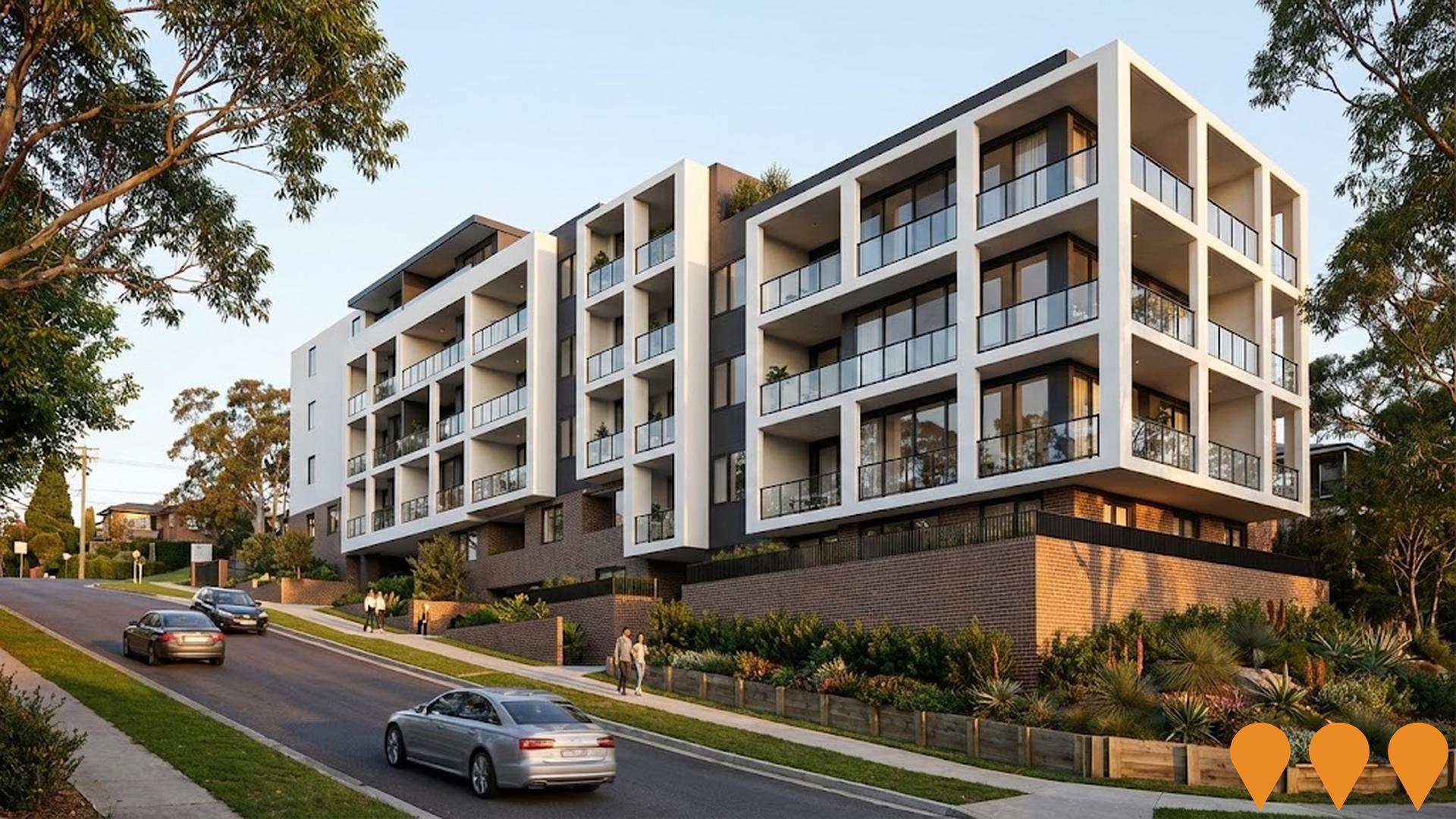
Canberra Light Rail Stage 4 - Woden to Tuggeranong
Proposed extension of Canberra's light rail network from Woden Town Centre south to Tuggeranong Town Centre via Mawson and the Athllon Drive corridor. This future stage aims to complete the north-south radial mass transit spine, connecting major residential, employment and activity centres while supporting bus, cycling, walking and private vehicle integration.
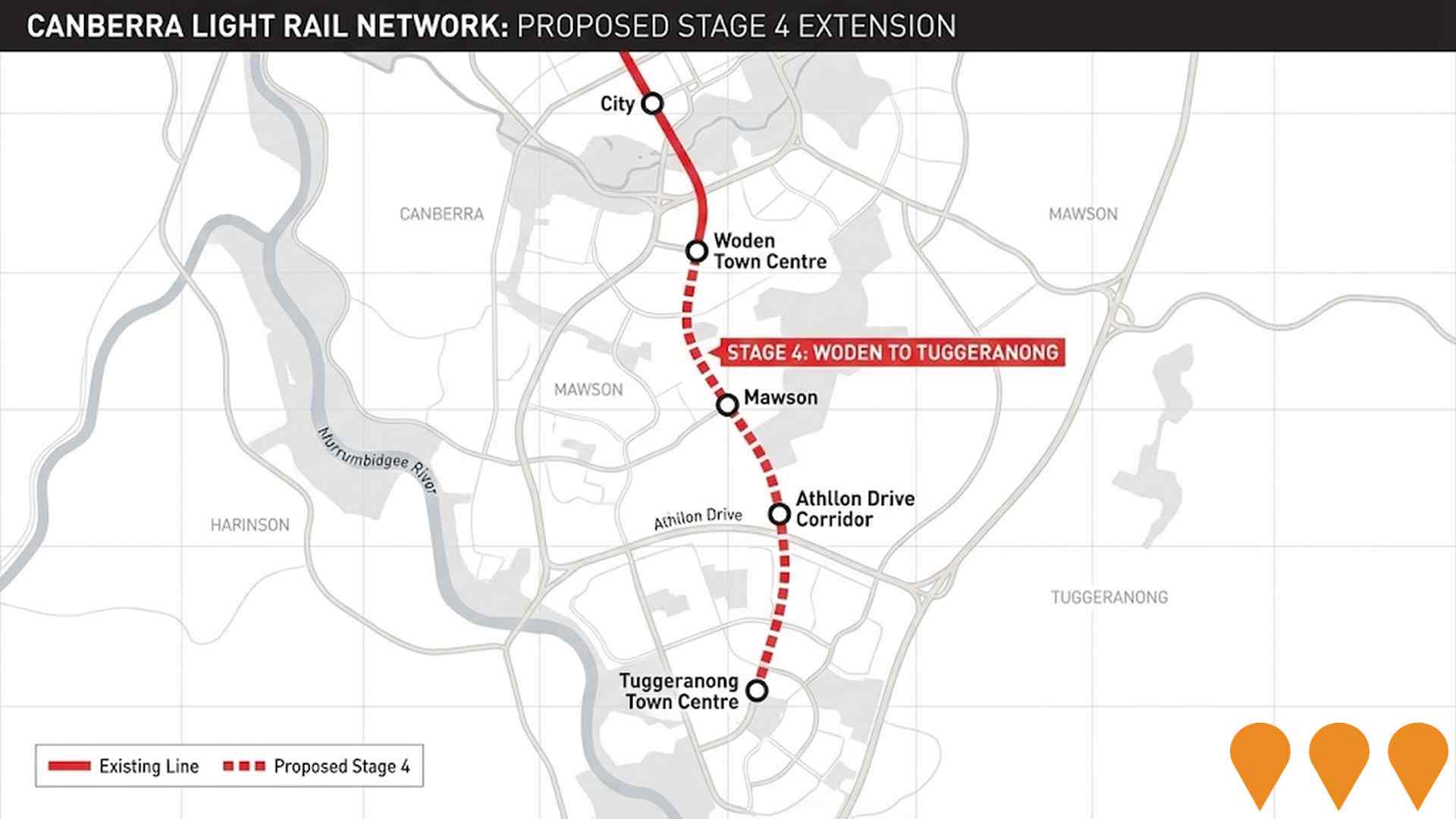
Erindale Group Centre Master Plan Implementation - Stage 1
Major revitalisation of the Erindale precinct including new community facilities, upgraded public realm, improved active travel links, and preparation for future mixed-use and residential development directly adjoining Wanniassa. The Erindale Group Centre master plan is a non-statutory document that outlines a vision to guide growth and development of the centre over the next 30 years.
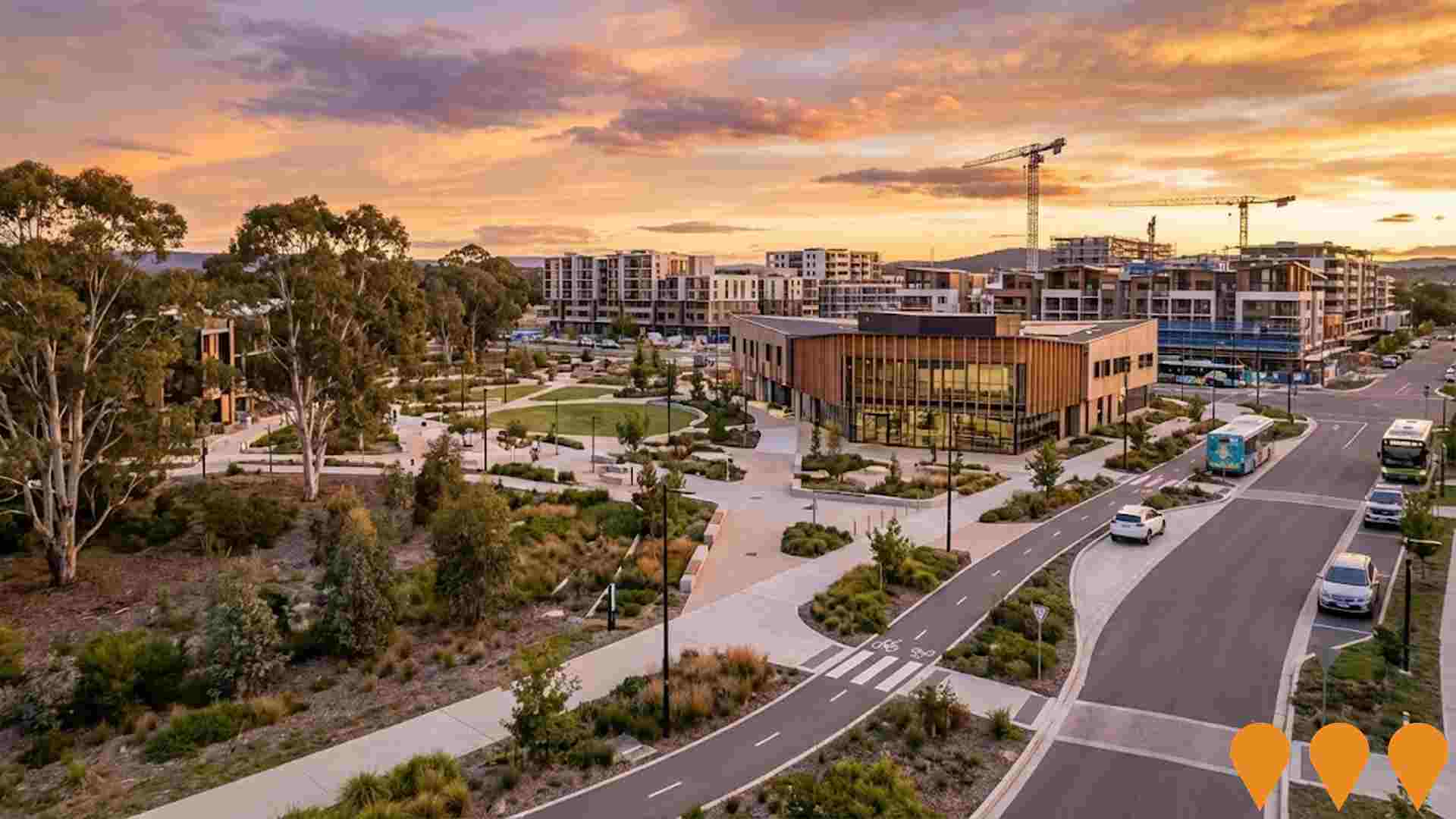
Enhanced bus and light rail corridors (Belconnen & Queanbeyan to Central Canberra)
ACT is progressing an integrated program to enhance high-frequency bus and future light rail corridors that link Belconnen and Queanbeyan with central Canberra. Light Rail Stage 2A (City to Commonwealth Park) commenced construction in early 2025 with services targeted from 2028, while planning and approvals continue for Stage 2B to Woden. The ACT Government has acknowledged and is planning upgrades for the Belconnen-to-City bus corridor as groundwork for a future east-west light rail Stage 3, and is coordinating cross-border public transport initiatives with NSW through the Queanbeyan Region Integrated Transport Plan and the ACT-NSW MoU for Regional Collaboration.
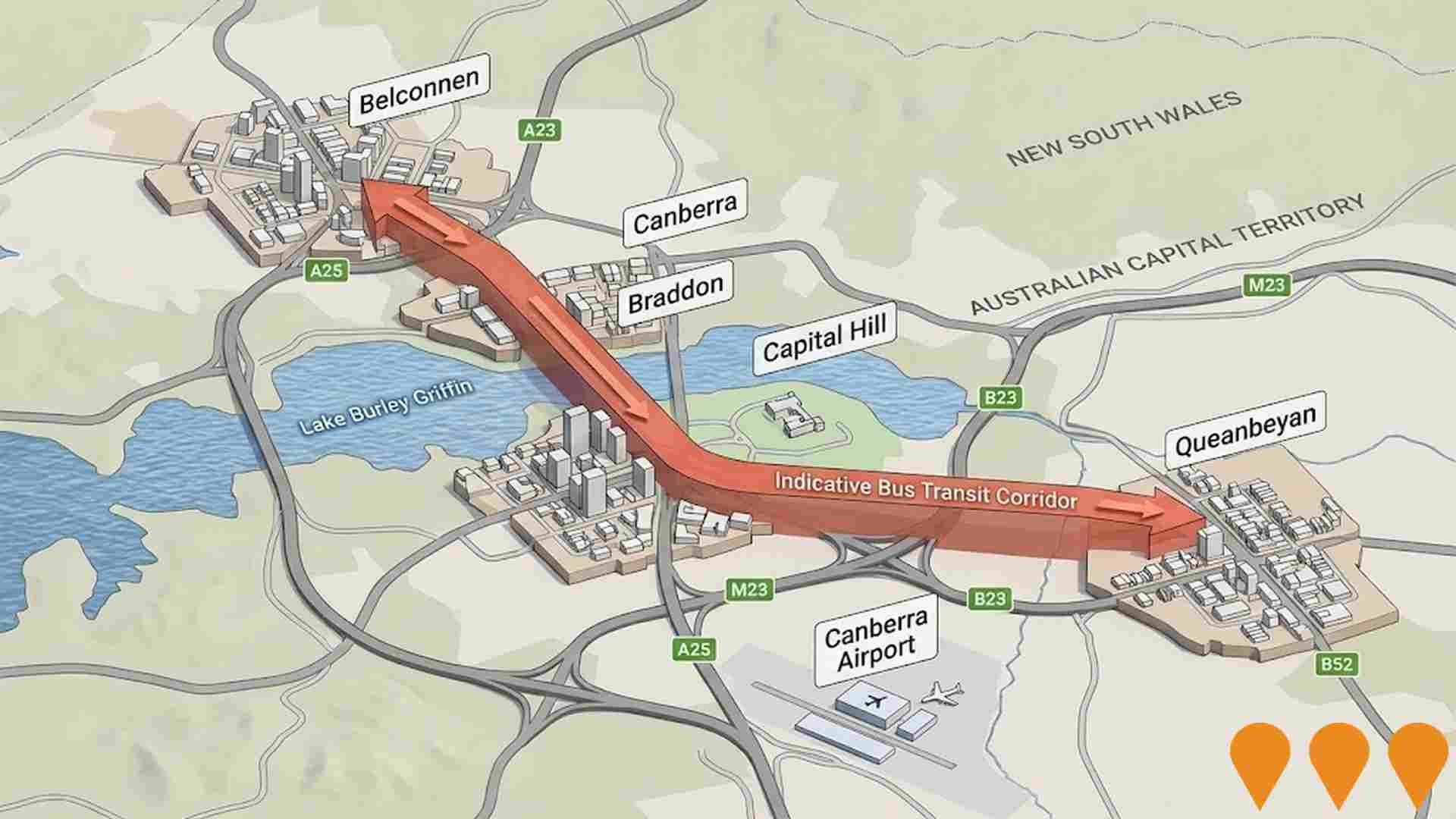
HumeLink
HumeLink is a new 500kV transmission line project connecting Wagga Wagga, Bannaby, and Maragle, spanning approximately 365 km. It includes new or upgraded infrastructure at four locations and aims to enhance the reliability and sustainability of the national electricity grid by increasing the integration of renewable energy sources such as wind and solar.
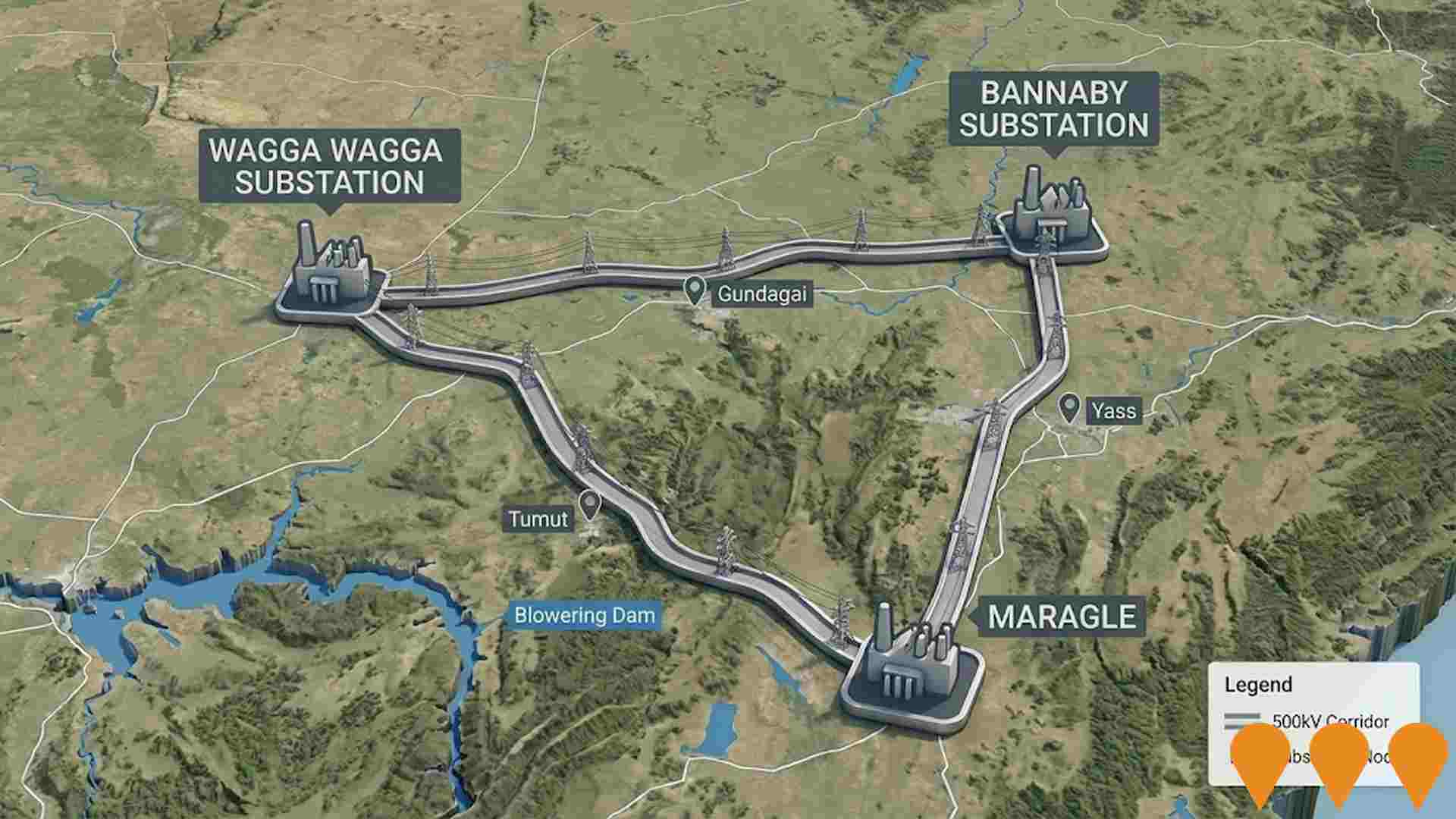
Queanbeyan Regional Integrated Transport Plan
Comprehensive transport planning initiative with 64 key actions for next 10 years. Addresses road safety, active transport connectivity, public transport availability, and future transport needs. Improved connections between Queanbeyan and ACT.
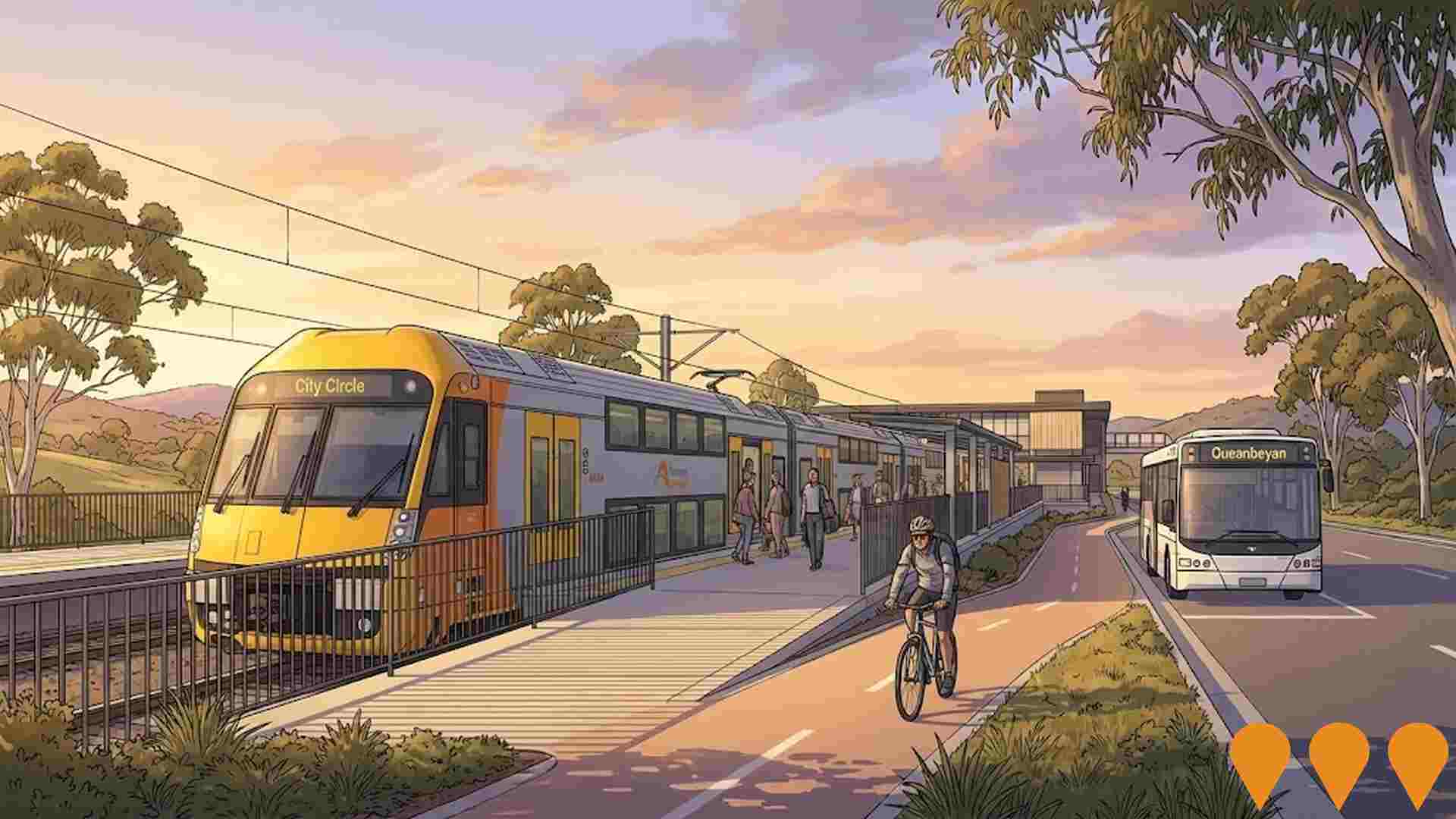
Big Canberra Battery (Williamsdale BESS)
A 250 MW / 500 MWh battery energy storage system at Williamsdale in southern Canberra, delivered by Eku Energy as Stream 1 of the ACT Government's Big Canberra Battery. Construction commenced in November 2024 with partners CPP and Tesla supplying Megapack systems. The asset will connect to Evoenergy's 132 kV network near the Williamsdale substation to provide two hours of dispatchable power, grid services and reliability for the ACT. Target operations in 2026.
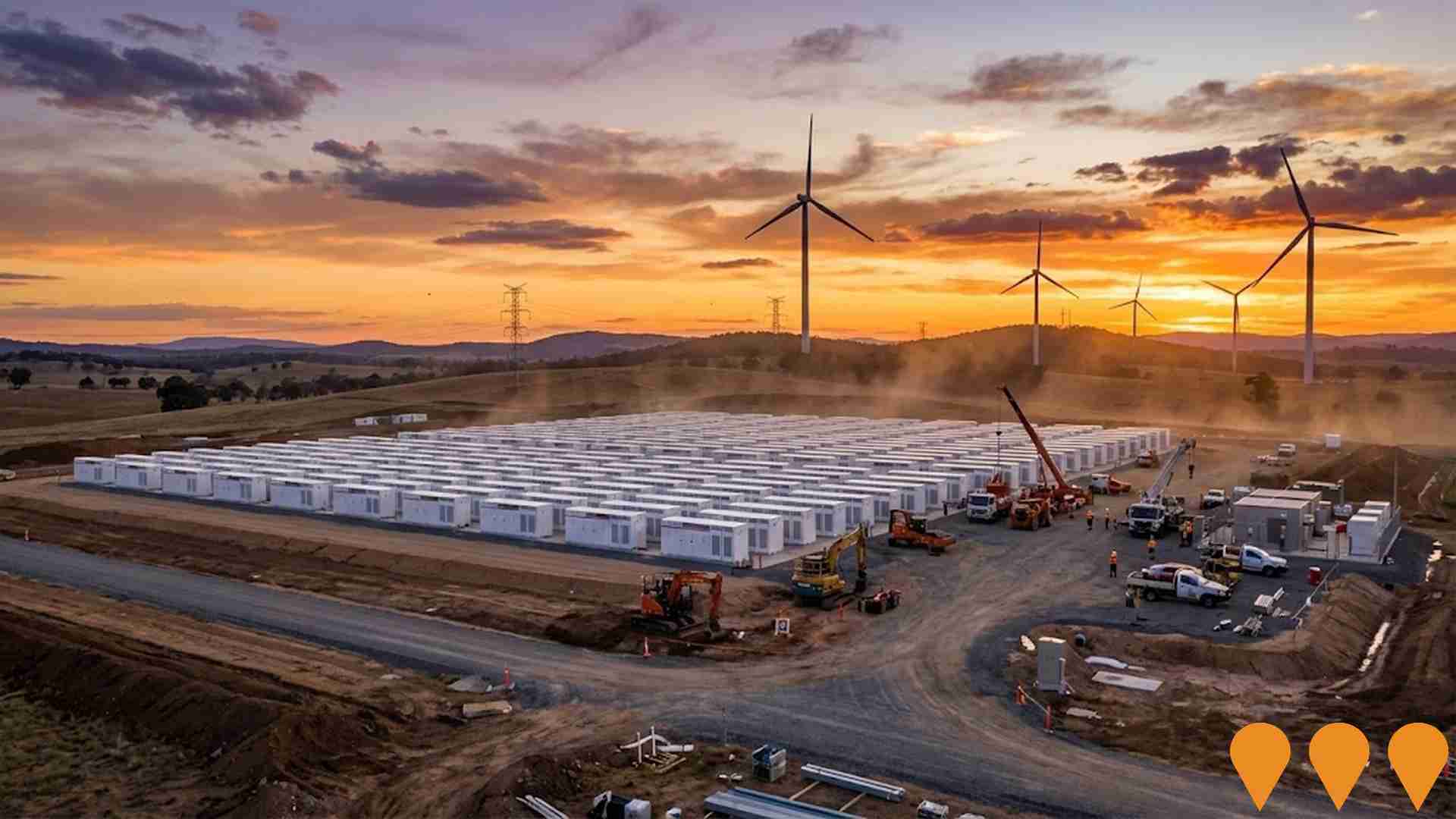
Employment
Employment conditions in Fadden rank among the top 10% of areas assessed nationally
Fadden has an educated workforce with strong representation in professional services. Its unemployment rate was 1.1% as of June 2025, below the Australian Capital Territory's (ACT) rate of 3.4%.
Employment grew by 1.3% over the past year. As of June 2025, 1,662 residents are employed with a workforce participation rate similar to ACT's 69.6%. Key industries include public administration & safety, health care & social assistance, and professional & technical services.
Accommodation & food services have limited presence at 4.8% compared to the regional average of 6.5%. Employment levels increased by 1.3%, labour force grew by 1.6%, and unemployment rose by 0.3 percentage points in Fadden between June 2024 and June 2025, contrasting with ACT's employment growth of 1.9% and unemployment decrease of 0.3 percentage points. National employment forecasts from Jobs and Skills Australia (May 2025) project a 6.6% increase over five years and 13.7% over ten years nationally. Applying these projections to Fadden's industry mix suggests local growth rates of approximately 6.6%% over five years and 13.5% over ten years, though these are simple extrapolations for illustrative purposes only.
Frequently Asked Questions - Employment
Income
The economic profile demonstrates exceptional strength, placing the area among the top 10% nationally based on comprehensive AreaSearch income analysis
AreaSearch's latest postcode level ATO data for financial year 2022 shows that income in Fadden is among the top percentile nationally. The median assessed income is $80,083 while the average income stands at $93,514. This contrasts with Australian Capital Territory's figures of a median income of $68,678 and an average income of $83,634. Based on Wage Price Index growth of 13.6% since financial year 2022, current estimates for Fadden would be approximately $90,974 (median) and $106,232 (average) as of September 2025. Census data reveals that household, family and personal incomes all rank highly in Fadden, between the 97th and 99th percentiles nationally. Distribution data shows 38.1% of the population (1,129 individuals) fall within the $4000+ income range, contrasting with the surrounding region where the $1,500 - 2,999 bracket leads at 34.3%. The substantial proportion of high earners (55.8% above $3,000/week) indicates strong economic capacity throughout Fadden. After housing costs, residents retain 90.8% of income, reflecting strong purchasing power and the area's SEIFA income ranking places it in the 10th decile.
Frequently Asked Questions - Income
Housing
Fadden is characterized by a predominantly suburban housing profile, with above-average rates of outright home ownership
In Fadden, as recorded in the latest Census, 96.8% of dwellings were houses with the remaining 3.1% being semi-detached, apartments, or other types. This compares to the Australian Capital Territory's figures of 79.6% houses and 20.4% other dwellings. Home ownership in Fadden stood at 45.3%, with mortgaged dwellings at 48.4% and rented ones at 6.3%. The median monthly mortgage repayment was $2,383, higher than the Australian Capital Territory average of $2,000. The median weekly rent in Fadden was $620, compared to the Australian Capital Territory's $425. Nationally, Fadden's mortgage repayments were significantly higher at $1,863 and rents were substantially above the national figure of $375.
Frequently Asked Questions - Housing
Household Composition
Fadden features high concentrations of family households, with a higher-than-average median household size
Family households comprise 86.0% of all households, including 44.0% couples with children, 33.1% couples without children, and 8.1% single parent families. Non-family households account for the remaining 14.0%, with lone person households at 12.7% and group households comprising 1.2%. The median household size is 2.9 people, larger than the Australian Capital Territory average of 2.6.
Frequently Asked Questions - Households
Local Schools & Education
Fadden shows strong educational performance, ranking in the upper quartile nationally when assessed across multiple qualification and achievement indicators
Educational attainment in Fadden is notably high, with 47.1% of residents aged 15 and above holding university qualifications as of the most recent data point, compared to 30.4% nationally and 31.1% in the SA3 area. Bachelor degrees are the most prevalent at 26.0%, followed by postgraduate qualifications (14.5%) and graduate diplomas (6.6%). Vocational credentials are also common, with 25.6% of residents holding such qualifications - advanced diplomas (11.6%) and certificates (14.0%). Educational participation is high, with 28.4% of residents currently enrolled in formal education, including 10.1% in primary, 8.6% in secondary, and 5.4% in tertiary education as of the current academic year.
Fadden Primary School serves the local community, with an enrollment of 233 students as of the latest count. The school focuses exclusively on primary education, with secondary options available in surrounding areas. School places per 100 residents stand at 7.9, below the regional average of 14.9, indicating some students may attend schools in nearby areas.
Frequently Asked Questions - Education
Schools Detail
Nearby Services & Amenities
Transport
Transport servicing is moderate compared to other areas nationally based on assessment of service frequency, route connectivity and accessibility
The public transport analysis shows that there are 23 active transport stops operating within Fadden. These stops serve a mix of buses, with 5 individual routes providing service. In total, these routes offer 531 weekly passenger trips.
The accessibility of the transport is rated as excellent, with residents typically located 184 meters from their nearest stop. On average, there are 75 trips per day across all routes, which equates to approximately 23 weekly trips per individual stop.
Frequently Asked Questions - Transport
Transport Stops Detail
Health
The level of general health in Fadden is notably higher than the national average with both young and old age cohorts seeing low prevalence of common health conditions
Fadden demonstrates above-average health outcomes with both young and old age cohorts showing low prevalence of common health conditions. The rate of private health cover is exceptionally high at approximately 68% of the total population (2,022 people), compared to 57.2% across Australian Capital Territory and a national average of 55.3%. The most common medical conditions in the area are arthritis and asthma, impacting 8.7 and 8.0% of residents respectively, while 69.6% declare themselves completely clear of medical ailments compared to 66.1% across Australian Capital Territory.
The area has 19.8% of residents aged 65 and over (587 people), which is higher than the 17.6% in Australian Capital Territory. Health outcomes among seniors are particularly strong, performing even better than the general population in health metrics.
Frequently Asked Questions - Health
Cultural Diversity
The level of cultural diversity witnessed in Fadden was found to be above average when compared nationally for a number of language and cultural background related metrics
Fadden's population showed cultural diversity with 23.8% born overseas and 15.3% speaking a language other than English at home. Christianity was the predominant religion, accounting for 52.0%. Islam was slightly overrepresented at 2.0%, compared to the Australian Capital Territory average of 2.4%.
The top three ancestry groups were English (26.4%), Australian (24.0%), and Irish (9.4%). Some ethnic groups showed notable divergences: Serbian was higher at 0.7% in Fadden than the regional average of 0.4%, Croatian at 1.1% versus 0.8%, and Welsh at 0.8% compared to 0.5%.
Frequently Asked Questions - Diversity
Age
Fadden hosts an older demographic, ranking in the top quartile nationwide
With a median age of 42, Fadden's population is considerably higher than the Australian Capital Territory figure of 35, which stands at 38 years nationally. Compared to the ACT average, the 65-74 cohort is notably over-represented in Fadden, making up 12.9% of the local population, while those aged 25-34 are under-represented at 6.0%. Between 2021 and the present, the 15 to 24 age group has grown from 10.9% to 13.3%, while the 75 to 84 cohort increased from 4.1% to 5.5%. Conversely, the 55 to 64 cohort has declined from 15.5% to 13.5%, and the 25 to 34 age group dropped from 7.8% to 6.0%. Demographic modeling suggests that Fadden's age profile will evolve significantly by 2041, with the 45 to 54 age cohort projected to expand by 80 people (21%), growing from 386 to 467. Conversely, both the 25 to 34 and the 0 to 4 age groups are expected to see reduced numbers.
